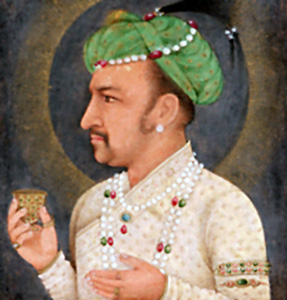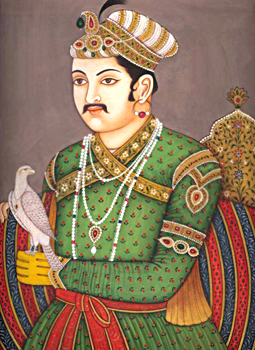 Muslim influence largely came in the form of invading, conquering armies which did little to win favour and conquerors rarely allowed native Indians to hold important positions, even if they had converted to Islam. Some converted to Islam because they were members of lower castes and embraced a faith that recognized all believers as equal in the society. However, their conversion did not improve their social standing. Their social and economic condition improved only if the members of their entire caste converted en masse.
Muslim influence largely came in the form of invading, conquering armies which did little to win favour and conquerors rarely allowed native Indians to hold important positions, even if they had converted to Islam. Some converted to Islam because they were members of lower castes and embraced a faith that recognized all believers as equal in the society. However, their conversion did not improve their social standing. Their social and economic condition improved only if the members of their entire caste converted en masse.
Influence of Delhi Sultanate
India had witnessed a feudal despotism and the King was co-terminus with it. King was the apex of the whole system, the keystone of the arch of government. The kings set the tone of the upper social classes. The Sultans of Delhi were interested in building lofty palaces, accumulating vast treasure, concentrating all financial powers in their hands, carrying on incessant wars of conquest. The king had also his favourites of all sorts, astrologers, poets, musicians, clowns and others. The most influential were the `Nadims,` a class intellectually well-equipped, in manners sophisticated, in dress most up-to-date and conversationally very pleasing and adaptable to the moods of the King. They had hardly any official position. The Sultans had a vast household staff who were organised into various departments.
`Sar-abdar` looks after the royal toilet arrangement, the `Chashnigir,` supervises the royal kitchen, and `Saqi-i-Khas` provides wines and other drinks to the royalty. These functionaries had a regular subordinate establishment to assist them in their activities. The Sultan was always surrounded by pomp and ceremonies. The `Khutba` was the recitation of the public sermon in the name of the new king and the `Sikka` was the issue of money bearing his signature. Strict etiquette was to be followed for these functions.
 Other social classes were below the king. The chief among the upper classes were the proper ruling class also called the Ahl-i-daulat. They comprised members of the royal family, the nobility and the army. The intelligentsia comprised of the theologians also called the `ulama`. The judicial officers also called the `Qazis` were men of learning and pious and lastly was the class of musicians and the dancers.
Other social classes were below the king. The chief among the upper classes were the proper ruling class also called the Ahl-i-daulat. They comprised members of the royal family, the nobility and the army. The intelligentsia comprised of the theologians also called the `ulama`. The judicial officers also called the `Qazis` were men of learning and pious and lastly was the class of musicians and the dancers.
The masses consisted both of Hindus and the Mohammedans. They enjoyed very little pleasure. Their function was to pay the taxes, till their fields or work in the urban areas and allow themselves to be oppressed by the concerned officers. Power was monopolised by the aristocracy in which the Turks, the Persians, the Arabs, the Abyssinians, the Egyptians and the Afghans held supremacy. The nobility was united only in war; peace was torn by personal jealousies, ambitions, rivalries and interests. The influence of the `ulama` was great on the Muslims. Ulama monopolised judicial ecclesiastical and educational services. They were consulted by the sovereign both on important points of law and on matters of state policy. Their influence was not always beneficial. They always showed inclination towards a war against the infidels.
The Hindus were the majority. They were hewers of wood and drawers of water. Neither their property nor their life was safe. Most of the land was held by them. Some among them operated the lower branches of administration like the revenue and finance, trading, business, and commercial classes and even acted as merchants to the Muslim army. The ruling classes were in the minority. With the firm establishment of the Muslim rule in India, the rulers discovered that permanent place could only be secured in co-operation with the majority in India and therefore they needed the help of the Hindus in the provincial courts or administration. Socially the Muslim society under the Sultans was feudal. Social privileges, amenities of life, wealth and honour were the monopoly of the king. The masses lived in abject poverty.
Influence of Mughals
Society continued to be divided into the haves and the have-nots with power and wealth concentrated in the hands of the king and a small class of aristocracy. Two new factors however have influenced the social development. Firstly the kings became national monarchs. Concord was established between the Hindus and the Muslims through a policy of reconciliation introduced by Akbar. Consequently there was now social solidarity and cohesion. The Hindus supervised the administration of the empire in collaboration with the Mohammedans and also became ornaments of the royal court, contributing their share in the literary and artistic developments and by their inclusion widening the ranks of aristocracy. Secondly, the Mughal kings became secular in outlook.
Women and wine continued to be the obsession of the aristocracy. In the reign of Jahangir wine flowed freely in the court. The kings however attempted various social reforms. Evils like Sati and female infanticide were banned, widow-remarriage was encouraged, and female education was imparted. Dowry system was not encouraged. He also tried to check early marriages, polygamy and immoral wedding. In spite of these reforms the society continued to be feudal, conservative and reactionary.



















